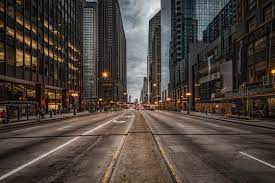
Cityscape Chronicles: Exploring the Heart of Urban Life
The Essence of City Life
City life is a vibrant tapestry woven together by the diverse threads of culture, community, and opportunity. From the towering skyscrapers that kiss the sky to the bustling streets teeming with energy, a city is a living, breathing entity that pulsates with life.
One of the defining features of city living is its rich cultural tapestry. Cities are melting pots where people from all walks of life come together to create a mosaic of traditions, languages, and beliefs. This diversity infuses city life with a sense of dynamism and excitement, offering endless opportunities for exploration and discovery.
Community lies at the heart of every city. It’s in the neighborhood cafes where locals gather for their morning coffee, the parks where families picnic on sunny afternoons, and the bustling markets where vendors hawk their wares. In a city, strangers become neighbors, forging connections that form the backbone of urban life.
Opportunity abounds in a city like nowhere else. From career prospects to artistic endeavors, cities are hubs of innovation and creativity. The fast pace of urban living propels individuals to dream big and chase their ambitions, fueling a spirit of entrepreneurship and ambition that permeates every corner.
Yet amidst the hustle and bustle lies moments of tranquility and beauty. The quiet parks that offer respite from the urban chaos, the hidden alleyways adorned with street art waiting to be discovered – these pockets of serenity provide balance to the frenetic energy that defines city life.
In essence, a city is more than just buildings and roads; it’s a living organism shaped by its inhabitants’ dreams and aspirations. It’s a place where cultures collide, ideas flourish, and communities thrive. City life is an ever-evolving narrative that unfolds with each passing day – a story waiting to be written by those who call it home.
Exploring Urban Landscapes: Key Questions About City Life and Development
- What is the largest city in the United States?
- How are cities different from rural areas?
- What are some popular tourist attractions in major cities?
- How do cities contribute to economic growth?
- What are the challenges faced by modern cities?
- What is urban planning and why is it important for cities?
- How do cities address issues like transportation and infrastructure?
- What factors influence a city’s quality of life?
- How do cities promote cultural diversity and inclusivity?
What is the largest city in the United States?
The largest city in the United States, both in terms of population and land area, is New York City. Known for its iconic skyline, diverse neighborhoods, and vibrant culture, New York City stands as a global metropolis that never sleeps. With a population exceeding 8 million residents and encompassing five boroughs, including Manhattan and Brooklyn, New York City is a bustling hub of commerce, art, entertainment, and innovation that attracts millions of visitors each year.
How are cities different from rural areas?
Cities and rural areas stand as contrasting landscapes, each offering a unique way of life shaped by their distinct characteristics. Cities pulsate with activity, boasting skyscrapers, bustling streets, and a diverse array of cultures converging in a melting pot of urban energy. In contrast, rural areas exude a sense of tranquility and connection to nature, with vast open spaces, rolling fields, and tight-knit communities fostering a slower pace of life. The dichotomy between cities and rural areas lies in their essence – one epitomizes dynamism and opportunity, while the other embodies serenity and close-knit traditions.
What are some popular tourist attractions in major cities?
Major cities around the world boast a plethora of popular tourist attractions that draw visitors from far and wide. From iconic landmarks like the Eiffel Tower in Paris and the Statue of Liberty in New York City to cultural hubs such as the Louvre Museum in London and the Vatican City in Rome, these destinations offer a glimpse into the rich history, art, and architecture that define each city’s unique charm. Additionally, vibrant neighborhoods like Shibuya in Tokyo, Times Square in New York, and La Rambla in Barcelona provide a taste of local life with bustling markets, trendy boutiques, and delectable cuisine that cater to every traveler’s interests.
How do cities contribute to economic growth?
Cities play a pivotal role in driving economic growth through various avenues. As hubs of commerce, innovation, and industry, cities attract businesses and skilled workers, fostering a dynamic environment ripe for productivity and development. The concentration of diverse economic activities in cities creates synergies that promote efficiency and specialization, leading to increased output and competitiveness. Additionally, cities serve as centers for trade, investment, and knowledge exchange, facilitating collaboration and the dissemination of ideas that fuel technological advancements and entrepreneurial ventures. In essence, cities act as engines of economic growth by providing the infrastructure, resources, and opportunities necessary for businesses to thrive and individuals to prosper.
What are the challenges faced by modern cities?
Modern cities face a myriad of challenges as they navigate the complexities of urban living. From rapid population growth and increasing demands on infrastructure to environmental sustainability and social inequality, cities must grapple with issues that impact the quality of life for their residents. Urban planners strive to find solutions that promote sustainable development, efficient transportation systems, affordable housing, and inclusive communities while balancing the needs of a diverse population. Addressing these challenges requires innovative thinking, collaboration across sectors, and a commitment to creating cities that are resilient, equitable, and thriving hubs of opportunity for all who call them home.
What is urban planning and why is it important for cities?
Urban planning is the process of designing and organizing the physical, social, and economic aspects of a city to ensure sustainable growth and development. It involves making decisions about land use, transportation systems, infrastructure, housing, and public spaces to create functional, livable environments for residents. Urban planning is crucial for cities because it helps manage population growth, improve quality of life, promote economic prosperity, enhance environmental sustainability, and foster social equity. By carefully considering how a city is designed and built, urban planning plays a vital role in shaping the future of communities and ensuring that cities remain vibrant, resilient, and inclusive places for all who inhabit them.
How do cities address issues like transportation and infrastructure?
Cities address issues like transportation and infrastructure through a combination of strategic planning, investment, and collaboration. Urban planners work to design efficient transportation systems that cater to the needs of a growing population while minimizing congestion and environmental impact. This often involves developing public transportation networks, building or improving roads and bridges, implementing smart technology solutions, and promoting alternative modes of transport such as cycling and walking. Infrastructure projects are typically funded through a mix of public funds, private partnerships, grants, and federal assistance programs. City officials engage with stakeholders, experts, and the community to ensure that decisions align with long-term sustainability goals and enhance the overall quality of life for residents.
What factors influence a city’s quality of life?
Several factors play a crucial role in determining a city’s quality of life. Key considerations include access to healthcare, education, employment opportunities, public safety, affordable housing, transportation infrastructure, recreational amenities, environmental sustainability, and overall social cohesion. The availability of these essential services and resources can significantly impact residents’ well-being and satisfaction with their living environment. Additionally, factors such as cultural diversity, community engagement, governance effectiveness, and economic stability also contribute to shaping the overall quality of life within a city. By addressing these various aspects comprehensively, cities can strive to create inclusive and thriving communities that enhance the overall quality of life for all residents.
How do cities promote cultural diversity and inclusivity?
Cities promote cultural diversity and inclusivity through a variety of initiatives and policies aimed at celebrating different cultures, fostering dialogue between communities, and creating spaces for all voices to be heard. By organizing multicultural events, festivals, and exhibitions, cities provide platforms for diverse groups to showcase their traditions and heritage. Additionally, implementing anti-discrimination laws and promoting intercultural education help create a more inclusive environment where individuals from all backgrounds feel respected and valued. Through these efforts, cities not only embrace the richness of cultural diversity but also strive to build cohesive communities that thrive on mutual understanding and acceptance.









-
Tagged chicago food fest, community and culture, culinary extravaganza, culinary heritage, deep-dish pizzas